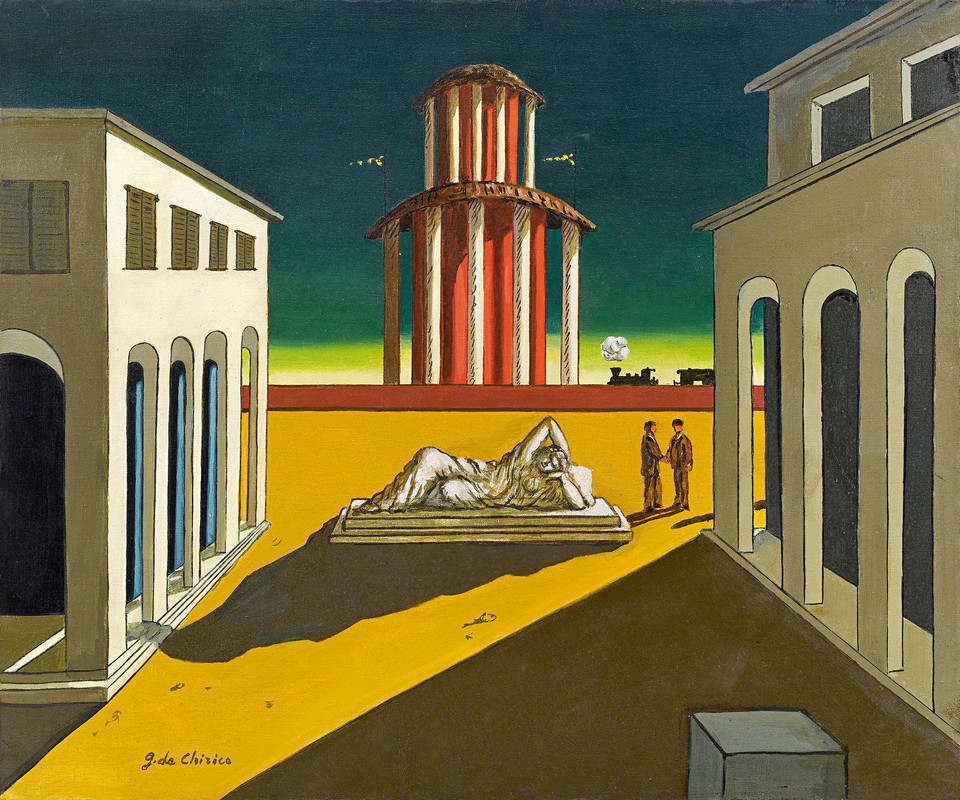What lies beyond what we see?
Can a silent, everyday object speak louder than a thousand words?
These are the kinds of questions that open the mysterious world of Metaphysical Painting, an art movement that emerged in early 20th-century Italy. It wasn’t about what was painted, but what it evoked: a sensation of stillness, of mystery, of something beyond the visible.
A World Between Reality and Dream
Metaphysical Painting is known for its enigmatic, almost dreamlike compositions. Empty city squares, long shadows, mannequins, statues, and classical architecture — all placed in such a way that they seem to hide a deeper meaning.
The style is precise, even architectural, yet emotionally charged. The viewer is invited to wonder: What just happened? What’s about to happen?

The Minds Behind the Mystery
The father of this movement is Giorgio de Chirico, whose work blended philosophy, literature, and a deep sense of nostalgia. Later, artists like Carlo Carrà and Giorgio Morandi joined in, each adding their own layer of depth and introspection.
Metaphysical Painting was a precursor to Surrealism, though more static and philosophical in tone.

Why It Still Fascinates Us
In a world that constantly moves, Metaphysical Painting offers us a pause, a moment of reflection. Its silence speaks volumes. It suggests that reality may hold more than what our eyes can see.
This movement reminds us that art is not only about aesthetics — it’s also a philosophical journey.
The legacy: beyond the canvas
Although Metaphysical Painting was short-lived, its influence was lasting. It directly inspired surrealist artists such as Dalí, Magritte, and Max Ernst, and also left its mark on film, literature, and architecture.
His greatest contribution was teaching us that art shouldn’t always explain, but suggest. That there can be beauty in the disconcerting, and that an empty square can say more than a crowded scene.

And today?
The influence of Metaphysical Painting lives on. In many contemporary artists, in the silences that seek to express something, in the spaces where absence speaks.
Perhaps that’s why it continues to captivate us: because it reminds us that the everyday can also be enigmatic, and that the most important aspect of a work isn’t always visible, but rather in what it makes us feel.

